What Is The Study Of Plants And Animals Called
When students think about studying scientific discipline, some of them might envision swimming with dolphins or spending time in the woods. Not all science happens in the lab, after all. When Science News for Students sent out a telephone call for pictures from women in science, technology, engineering science and technology (Stem), we got more than 150 submissions from around the world. And some of these scientists actually do spend their some of their scientific lives diving in the ocean for science and hiking in the forest. Today, encounter 18 scientists who are living the dream.
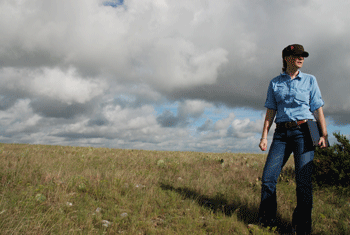
Brooke Best
All-time is a botanist — someone who studies plants. She investigates the diversity of plants in dissimilar environments. She too loves linguistic communication. And she gets to combine her two joys in her chore. She helps other scientists publish books and scientific journals about plant scientific discipline at the Botanical Research Institute of Texas in Fort Worth.
When she'south not checking out plants, All-time says, "I really bask memorizing rap songs (or any songs) with lots of very fast lyrics. Must exist the word lover in me!"
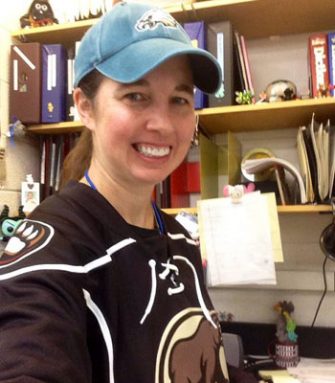
Tina Cairns
Scientists have some odd choices for their favorite things. Cairns has a favorite virus — herpes. This is a virus that infects people and can cause sores on the oral cavity, face and genitals. Having a favorite virus isn't so weird for Cairns, though. She's a virologist — someone who studies viruses — at the University of Pennsylvania in Philadelphia. Why does she like a virus that gives people irritating sores? Cairns studies how the virus enters cells, and her work has made her capeesh the virus' abilities.
When not in the lab, Cairns likes life on the ice. "I started playing water ice hockey in graduate school, and I wear a hockey jersey to the lab every twenty-four hour period," she says. "I own the jersey of every [National Hockey League] team, so I go on my lab mates guessing!"
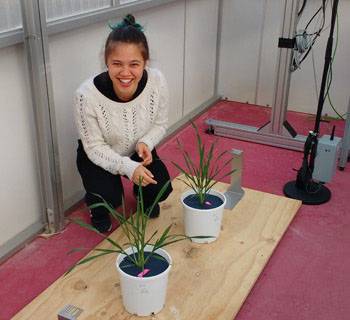
Olivia Cousins
Most of the time when you lot're eating a sandwich, you are eating bread made with wheat. But wheat plants can suffer if they don't go enough h2o or enough of the nitrogen they demand to make proteins. Cousins is a botanist getting a Ph.D. at the University of Adelaide in Australia and the Academy of Nottingham in England. She studies how wheat plants reply to drought and depression levels of nitrogen. (You tin follow her experiences as a scientist on her blog.)
Cousins too has a unique talent — she can make an apple crumble blindfolded. She doesn't exercise it virtually of the time, she says. She performed the feat, she notes, "to show how piece of cake it was to make apple tree crumble!"
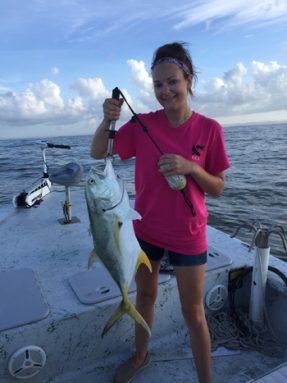
Amie Fritchman
Fritchman has ever had a passion for fish. And now, she's a marine biologist with the Coastal Conservation Association in Houston, Texas. The group works to conserve fishing areas and fish habitat forth the U.Due south. Gulf and Atlantic coasts.
To succeed at her job, Fritchman has to go on educating herself. She has taken classes to learn more near science and conservation, she says. She fifty-fifty took a form in taxidermy — how to stuff the skins of animals to brand them look life-similar. In the process, she learned how to taxidermy a rat.
Anna Furches
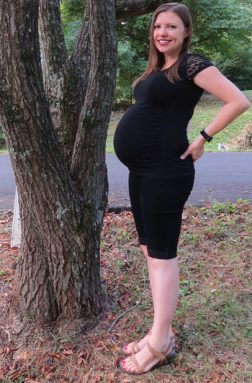
Plants alive surrounded by microbes. But they don't simply ignore them. Plants and microbes send signals to communicate with each other. Exactly how they do that is what Furches is trying to detect out. She's a botanist at Oak Ridge National Laboratory in Tennessee. She started out studying plant genetics. Once she began managing another scientist'south laboratory, though, she says that she realized "I needed more scientific training." Now, she is getting her PhD.
Furches is passionate nigh reaching out to young scientists. "My dream is to make the world a more egalitarian place for futurity generations while advancing humankind'south understanding of the universe in which nosotros live," she says.
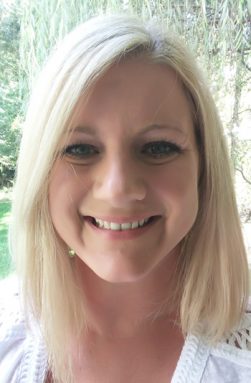
Amanda Glaze
You've probably taken a science class or two, and that may have taught you lot how scientists do research or almost their results. But did yous know at that place was also scientific inquiry behind your science course? Glaze is ane of the people responsible for that research. She studies how people acquire virtually science. She works at Georgia Southern University in Statesboro. She's interested in how science interacts with people'southward daily lives, especially for science topics that are somewhat controversial, such as development.
But before she studied scientific discipline instruction, Glaze had a lot of passions. "Growing upwardly, I balanced my fourth dimension between 2 farms and dance lessons, [cheerleading] and collecting fossils, and cotillion and riding four wheelers," she says. "Scientists come from all walks [of life]."
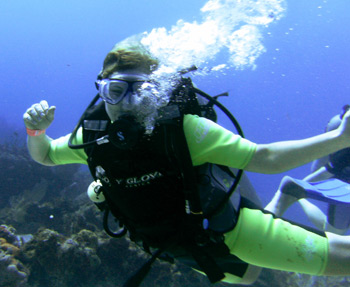
Breanna Harris
Harris loves SCUBA diving, but she spends well-nigh of her time on land. She's a behavioral endocrinologist at Texas Tech University in Lubbock. "I study how hormones affect beliefs and how behavior can affect hormones," she explains. "I am particularly interested in stress." In her lab, she says, Harris and her students "use humans and animals to written report how stress can bear upon fright, anxiety, memory and feeding." When she's not SCUBA diving, Harris also likes to run. She's even run a marathon. That'due south about 42 kilometers, or 26.2 miles.
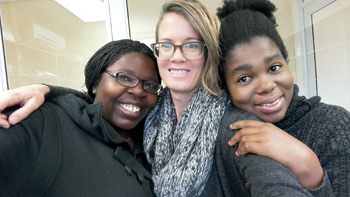
Sonia Kenfack, Rita Adele Steyn and Mavis Acheampong
These three scientists have a love for the spineless things in life. They written report invertebrates, or organisms that don't accept a spine. All three are graduate students at Rhodes University in Grahamstown, South Africa.
Kenfack is getting a PhD in entomology, the study of insects. She's originally from Republic of cameroon. "I am known as the happiest, giggliest person effectually," she says. "[I'm] naturally curious, and I dear to share noesis."
Steyn agrees that Kenfack has happiness in spades. Steyn is from South Africa, and says she is "utterly mesmerized by all things spineless in the ocean."
Acheampong is besides getting a caste in entomology. She'southward originally from Ghana, and loves football (what we in the The states telephone call soccer). Her favorite nutrient is plantains, a fruit that is related to bananas.
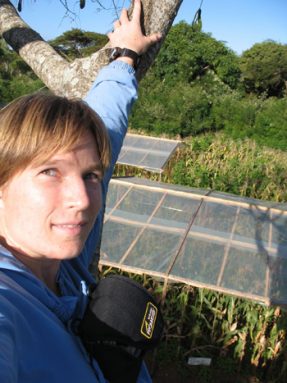
Amber Kerr
You may not think about where your food comes from every 24-hour interval. Only Kerr does. "I'm an agroecologist, studying how plants, air, h2o and soil interact in agronomical systems," she says. She does her work at the University of California, Davis. She's interested in how combining unlike plants together in the same field might help them survive in drought or heat. People might think that scientific discipline requires fancy tools, but no. In her work, Kerr says she uses "leaf litter bags made of pantyhose, rain gauges made of plastic bottles, a notebook and, of class, a hoe."
Kerr's piece of work has taken her all over the world. "When I lived in Malawi, I got quite proficient at 'butchering' jackfruit," she recalls. "These are tropical tree fruits that often weigh more than [ix kilograms] (20 pounds). Inside their tough spiky skin, oozing viscid sap, is a nest of inedible fibers hiding amazingly sweet pockets of yellow mankind wrapped around huge brown seeds. They are messy but delicious."
Katey Lesneski (motion picture at pinnacle)
Many people honey SCUBA diving, merely relatively few go to do it for their job. Lesneski gets to dive for science. She'south in graduate schoolhouse for marine biology at Boston University in Massachusetts. "I written report bleaching and wound healing in staghorn coral, an endangered Caribbean coral," she explains. "I am working to provide the science needed to guide certain reef restoration projects in Florida and Belize using this coral."
Lesnecki doesn't just dive for scientific discipline; she's also a divemaster. In her gratis fourth dimension, she teaches others how to swoop. "I am passionate about sharing my dear of diving and the underwater world with others around New England," she says.
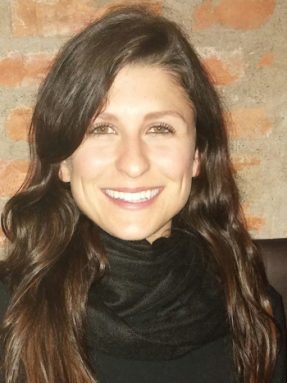
Jaiana Malabarba
If a plant doesn't accept obvious thorns, spines or hard bark, information technology might look pretty defenseless. Simply don't permit those innocent stems and leaves fool you. Plants have many ways of defending themselves from insects or other creatures that might try to accept a bite. Malabarba is a biologist who studies how plants do this. She started her career in Brazil, where she grew up, but her passion for science has taken her to the Max Planck Institute for Chemical Environmental in Jena, Frg.
Johanna Neufuss
"When I was younger, I had always bad grades in school because I was more passionate about watching animals outside than doing homework," says Neufuss. Merely she turned her honey of the outdoors into a career. She is now a graduate educatee in biological anthropology at the University of Kent in in Canterbury, England. Biological anthropology is a field of research that focuses on the behavior and biology of humans and their ape relatives.
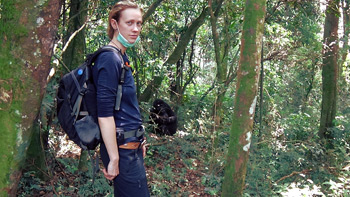
Neufuss is particularly interested in easily. "My research focus is on hand apply and hand postures used by African apes during locomotion and object manipulation," she explains. (Locomotion is when an animate being moves from place to identify. Object manipulation is when they are handling something.) She studies animals that tin be found in the wild every bit well as in sanctuaries, where they are protected. Learning nigh how apes such as gorillas employ their easily can teach scientists both about the apes themselves and how early humans may have used their ain easily as they evolved.
Megan Proska
Love both bugs and plants? Proska does. She uses her degrees in entomology — the study of insects — and horticulture — the study of plants — in her work at the Dallas Arboretum and Botanic Garden in Texas. She studies how plants and insects interact with each other.
Proska also displays her dear of plants by dressing upwardly as the villain Poison Ivy from the Batman comic books, movies and Telly serial.
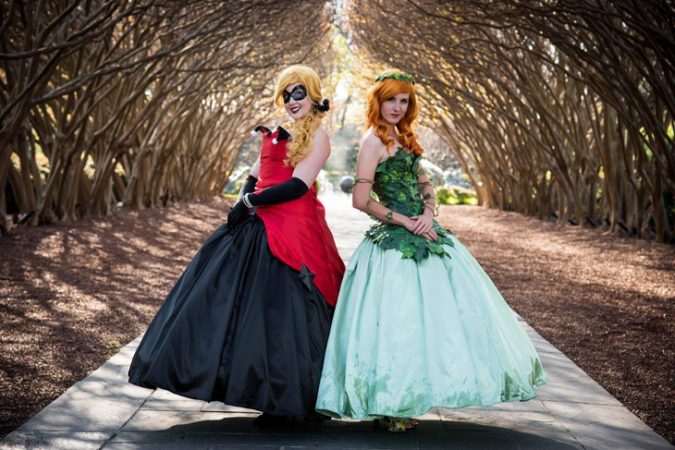
Elly Vandegrift
Some people love learning most scientific discipline, simply others suffer through their science classes. Vandegrift wants to change that. She'southward an ecologist who runs the Scientific discipline Literacy Program at the University of Oregon in Eugene. Her goal, she says, is to brand science classes "interesting, attainable, engaging and relevant for all students."
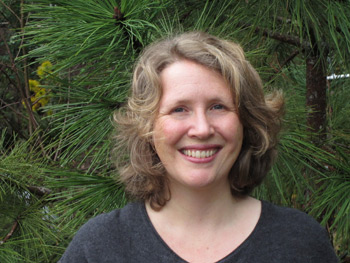
In her work and travels, Vandegrift has experienced the scarier side of science. While on a hike in Republic of kenya, she recalls, "Our Maasai guides got lost. We wandered in circles (with stinging nettle plants more than than half-dozen-feet tall all around us through areas with lion footprints larger than a dinner plate) for hours. Only after it started to rain, [it] began to get night and we were out of food and water. Our guides told us they were going to have us sit in a circle in the grass all nighttime while they kept united states safe from potential lion attacks. Totally surreal. Then a lookout establish the trail and walked us ii hours back to camp. The 'hike' lasted nine hours and stinging nettle rash for two weeks."
Alison Young
Many people who've been to the beach have played in tidepools — pools of saltwater left behind when the tide goes out. Tidepools have lots of creatures living in them. And people have been studying them for centuries. That includes Young. She is heading up a project to find out who's at home in a tidepool and what it ways for the environment. She'south a marine biologist at the California Academy of Sciences in San Francisco. Her job focuses on citizen scientific discipline — research performed by anyone, whether they have scientific training or not. Her groups of volunteers certificate biodiversity and practise long-term monitoring. That is "helping united states of america better sympathize changes taking identify in the tidepool community that are potentially correlated to things like El Niño, climate modify and human disturbance," she explains.
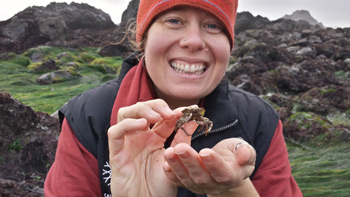
When she's not hunting tidepools, Immature is hunting other treasure. She likes to do geocaching, which is a worldwide scavenger chase. Geocachers use global positioning systems on their smartphones or other devices to find modest items based only on their coordinates. The joy is in the hunting, and Young has establish more than 2,000 geocaches.
If you enjoyed this mail service, brand sure to check out the others in our series on women in STEM. We've got women in astronomy, biology, chemical science, medicine, ecology, geology, neuroscience and math and computing. And go along an eye out for our final installment on fabulous science educators!
Follow Eureka! Lab on Twitter
Source: https://www.sciencenewsforstudents.org/blog/eureka-lab/these-scientists-study-plants-and-animals-land-and-sea
Posted by: greenwoodsommestake.blogspot.com


0 Response to "What Is The Study Of Plants And Animals Called"
Post a Comment